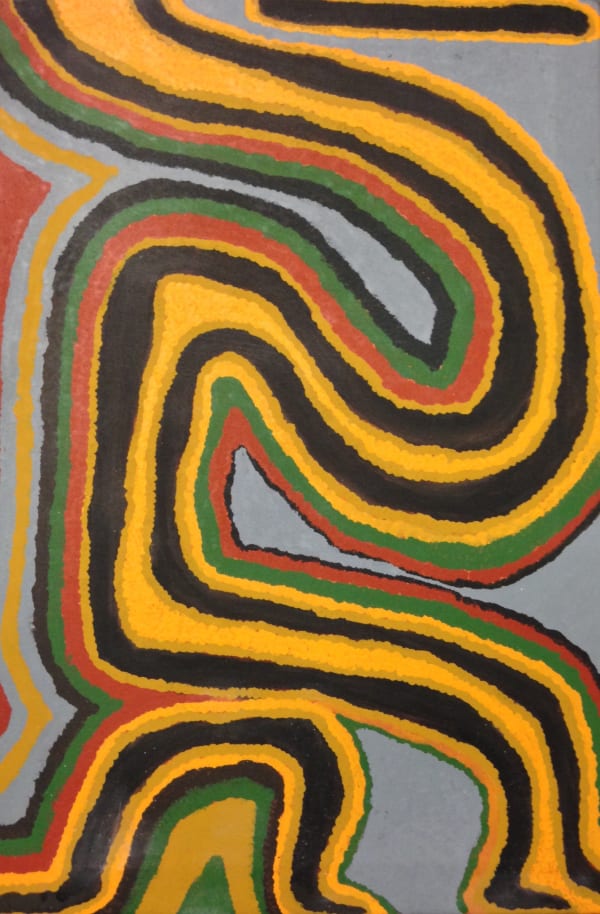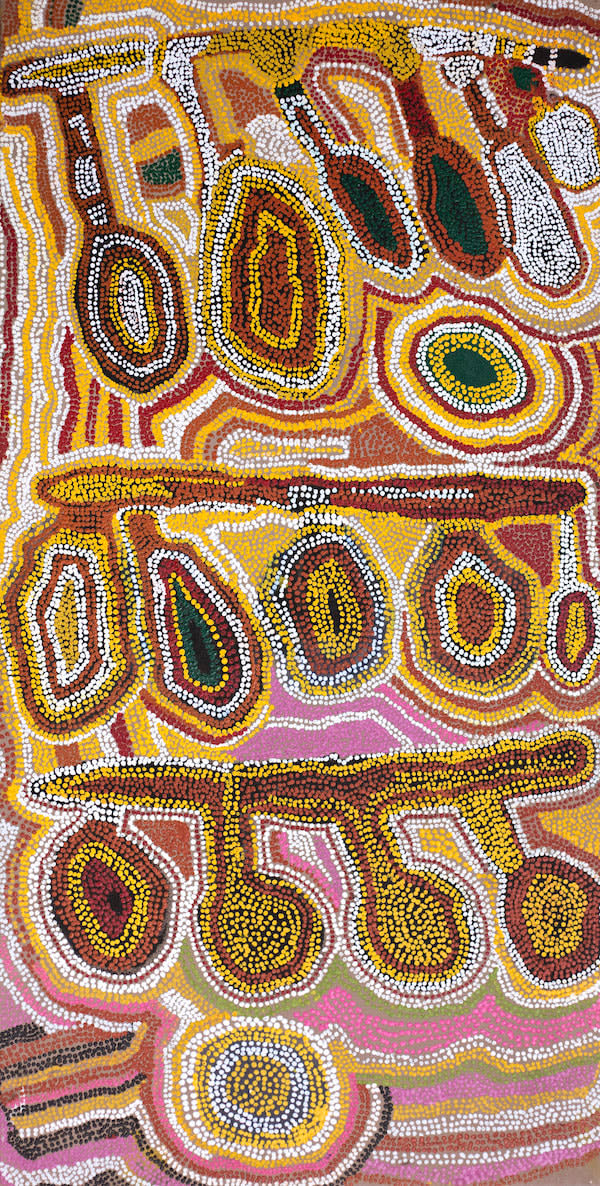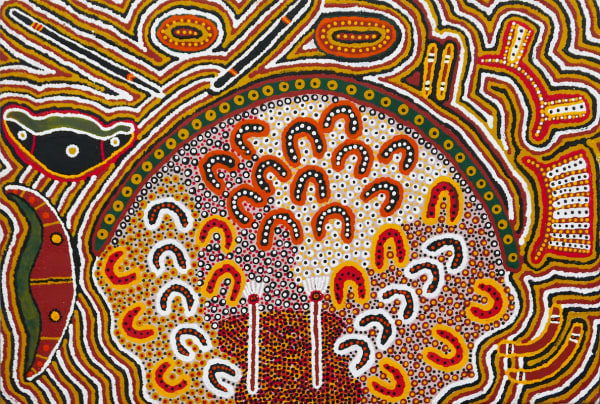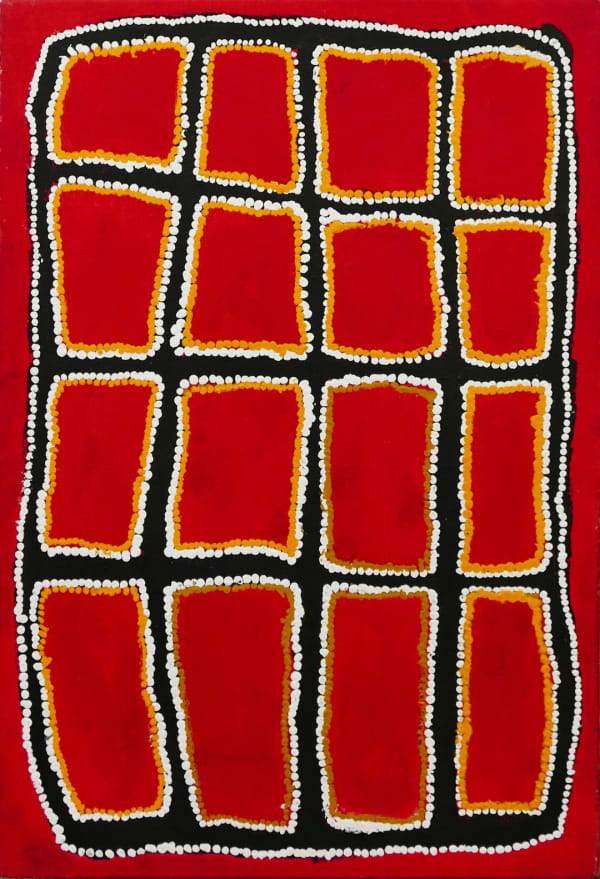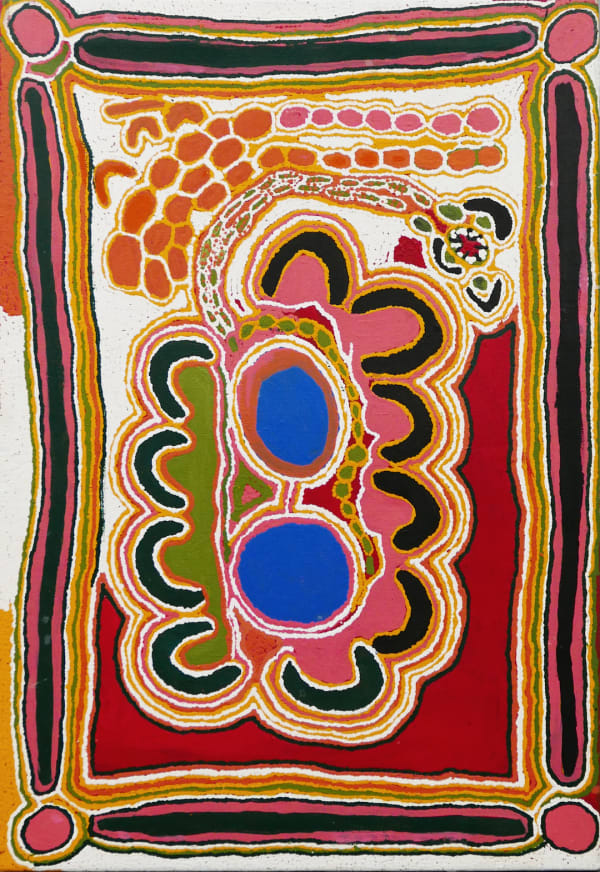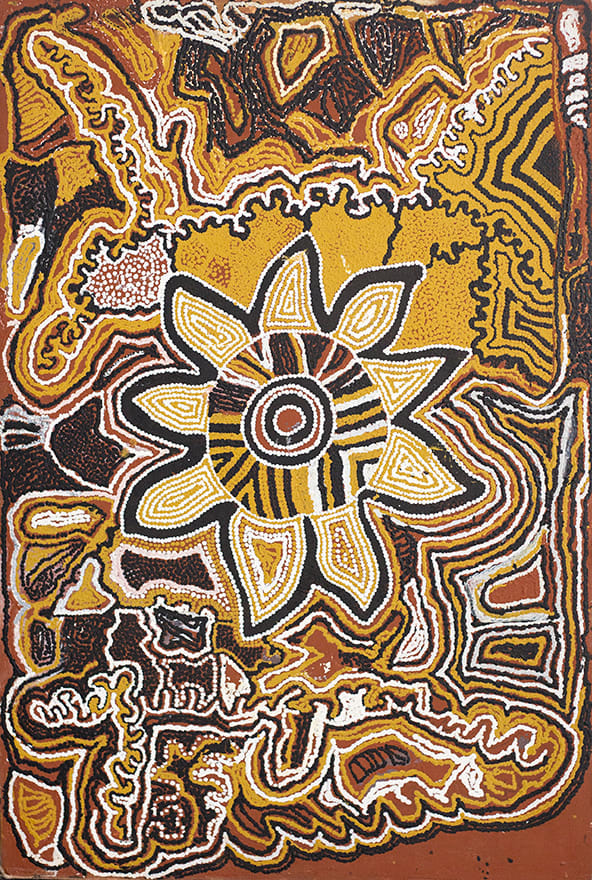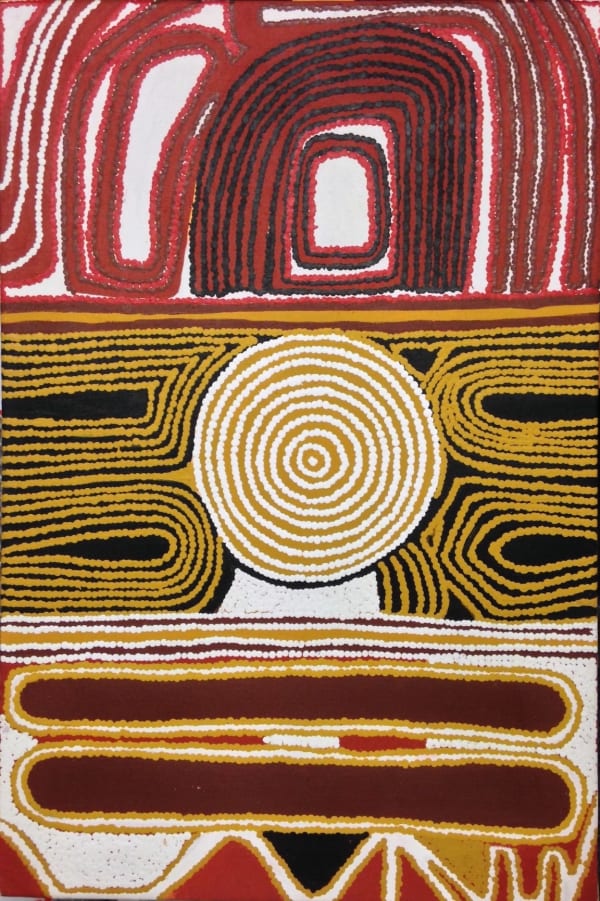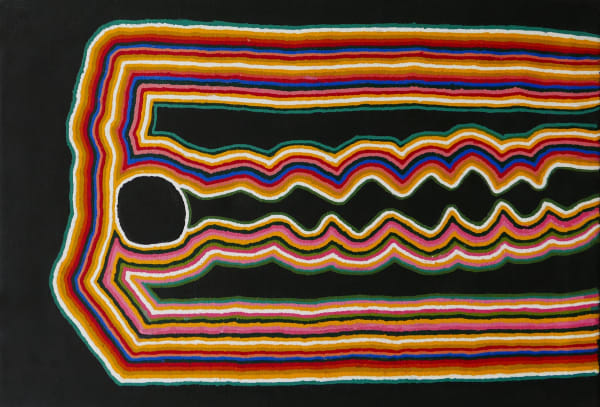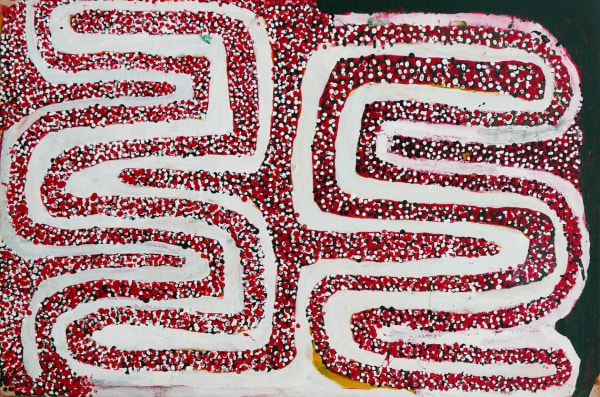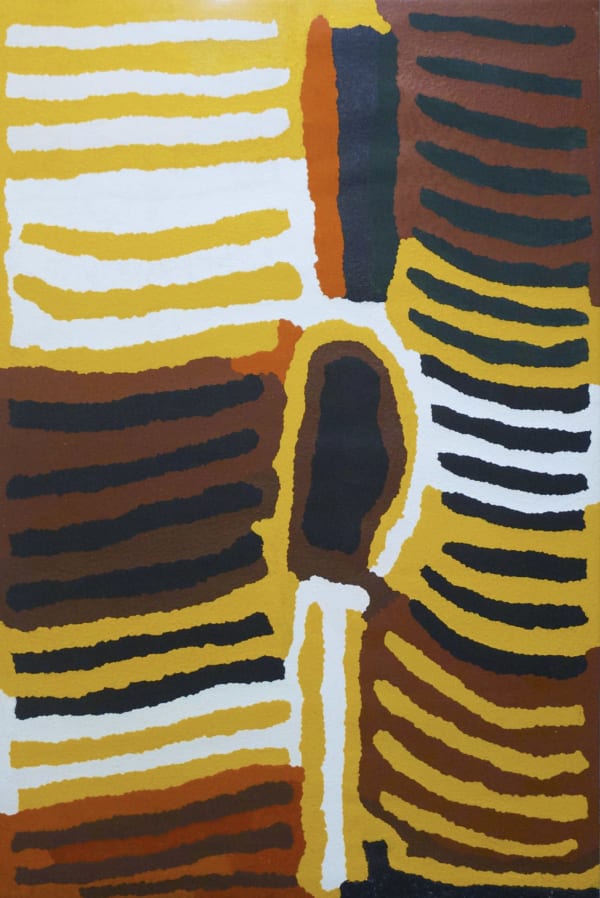Balgo Hills, or Wirramanu, is a remote community in the north of Western Australia, on the fringes of the Tanami and Great Sandy Deserts. Founded by Catholic Missionaries in the 1930s it has become a gathering place for numerous different Aboriginal peoples, amongst them the Walmajarri, Pintupi, Warlpiri and Kukatja language groups. Almost all these arrivals had been living a traditional nomadic life before settling at Balgo.
This cultural diversity – and cultural strength - has given the painting movement at Balgo, since its inception in the early 1980s, both a striking energy and a conspicuous variety. Although the iconography of Balgo works adheres to the ancient representations of the Dreaming creation-stories, the other pictorial elements are often daringly original. In the late 80s, the community’s artist moved away from a mute ochre-based palette to stronger colour contrasts allowed by the use of acrylic paint. The liberating boldness of this move created a great florescence in Balgo art, and one that endures to this day.
On her first first visit to Balgo, in 1989, Rebecca Hossack was able to meet many of the senior artists of the community, amongst them Eubena Nampitjin, Wimmitji Tjapangarti, Alan Tjakamarra Winderoo, David Hall Tjangala, Palmer Gordon Tjapanangka and Bridget Mudgidell. And their works formed the basis for an acclaimed exhibition at the gallery in London in 1990.

